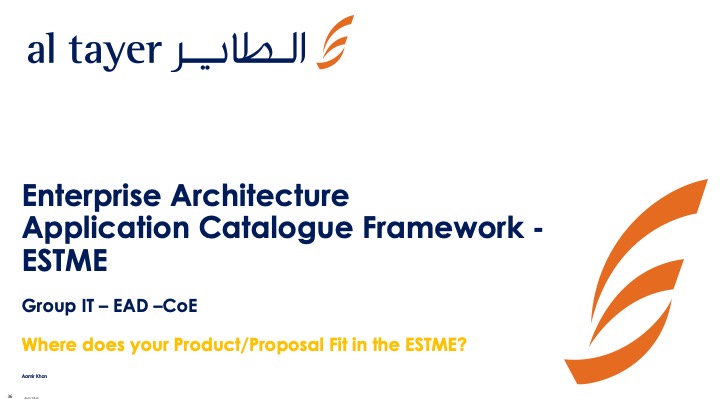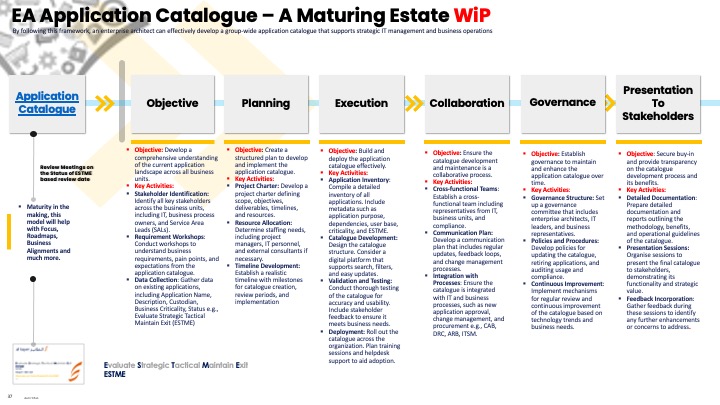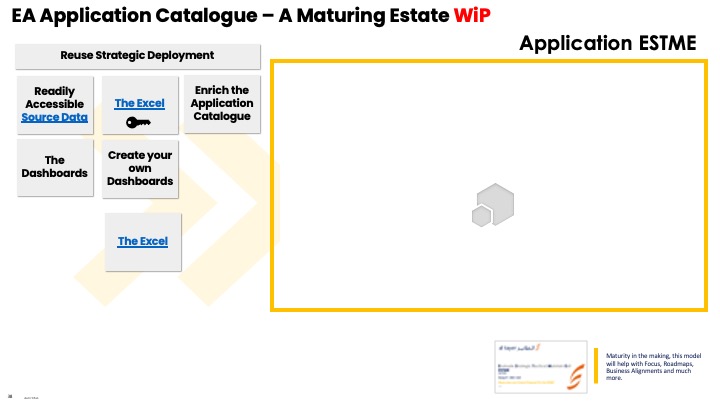Address
304 North Cardinal St.
Dorchester Center, MA 02124
Work Hours
Monday to Friday: 7AM - 7PM
Weekend: 10AM - 5PM


An Enterprise Architecture (EA) groupwide application catalogue is a comprehensive inventory of all applications used within an organisation. This catalogue plays a critical role in managing and optimising the IT landscape, aligning it with business goals, and ensuring effective governance and collaboration. This white paper aims to analyse the concepts behind an EA application catalogue, highlighting its objectives and strategic intent.
Comprehensive Understanding of Application Landscape:
Creation and Implementation of a Strategic Plan:
Building and Maintaining the Catalogue:
Collaboration and Governance:
Presentation and Stakeholder Buy-in:
The strategic intent of an EA groupwide application catalogue encompasses several key areas:
Optimisation of IT Assets:
Enhanced Decision-Making:
Alignment with Business Goals:
Improved Governance and Compliance:
Facilitation of Digital Transformation:
An EA groupwide application catalogue is a vital tool for managing the complexities of an organisation’s IT landscape. Its objectives span from understanding the current application environment to ensuring ongoing collaboration and governance. Strategically, it aims to optimise IT assets, enhance decision-making, align IT with business goals, improve governance, and support digital transformation. By achieving these objectives, the catalogue not only adds value to the IT function but also significantly contributes to the overall success of the organisation.
Yes this can be daunting at first there are many tabs and then some, come and talk to Aamir, but if you are comfortable locate the ATG Applications Tab usually if not changes the 2nd Tab in the Workbook.
oh…. come and chat you must be able to add some value if you are reading this.

